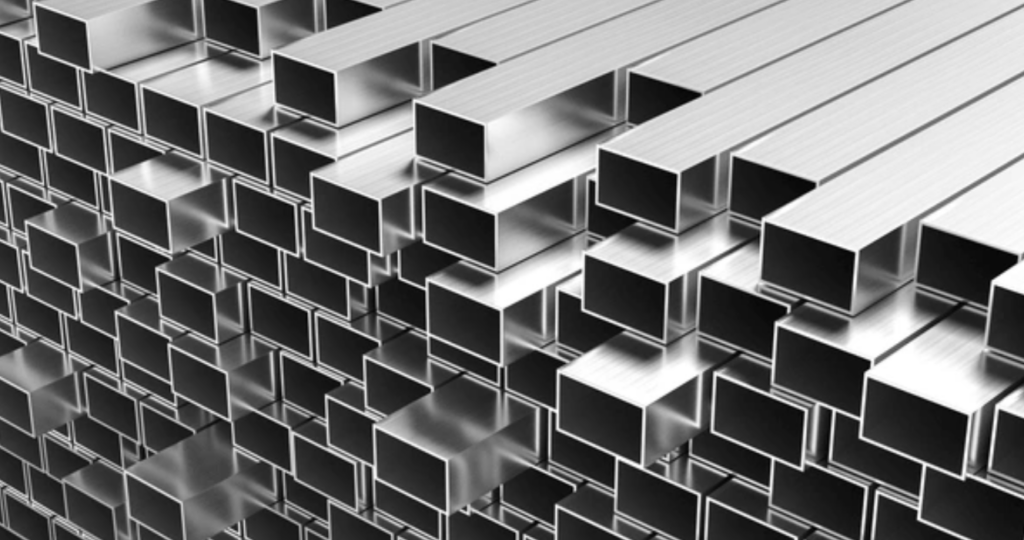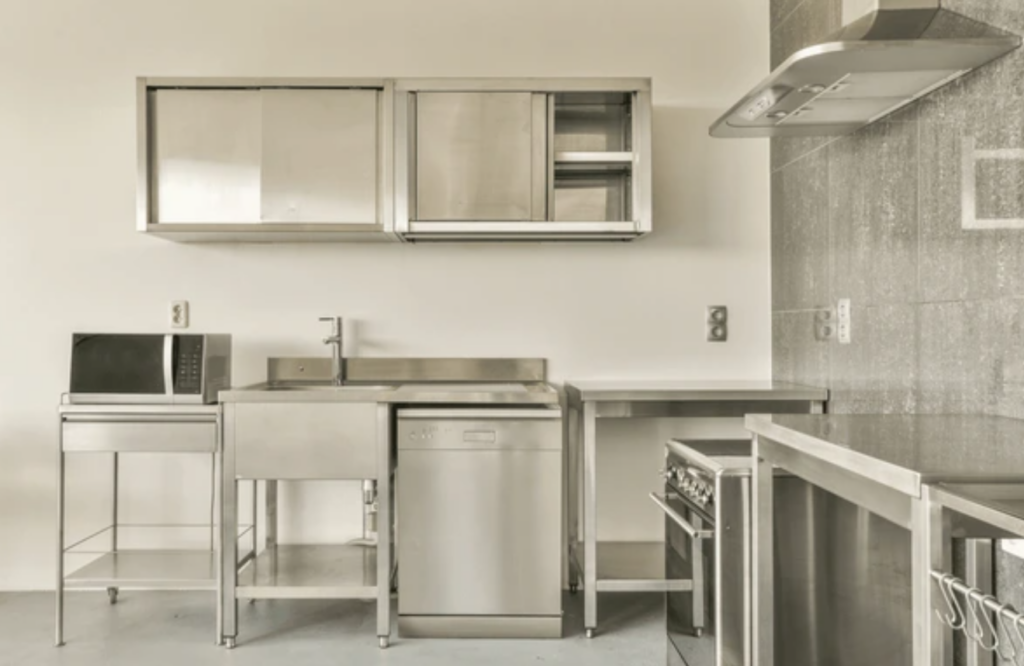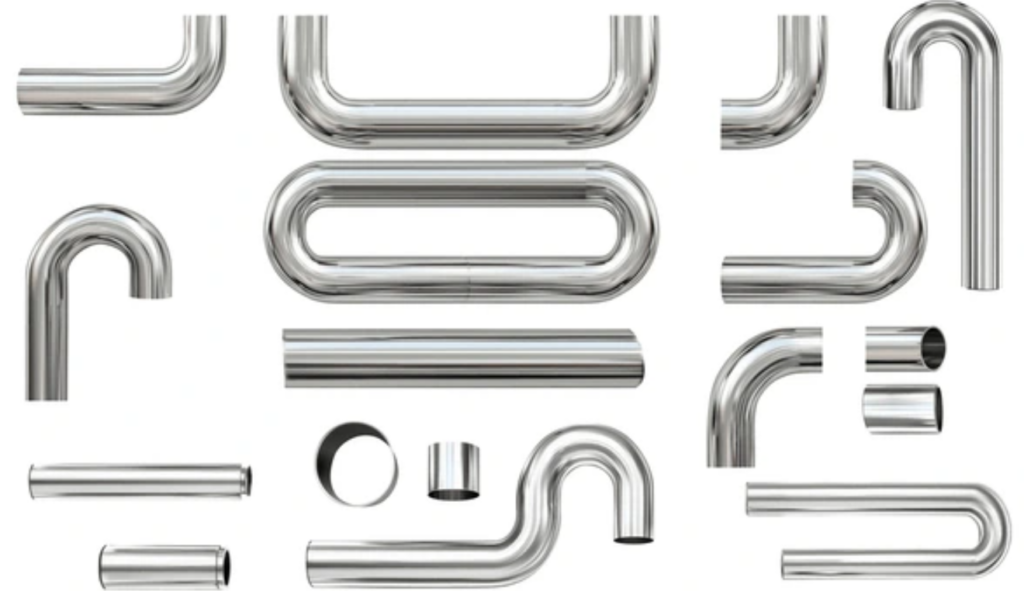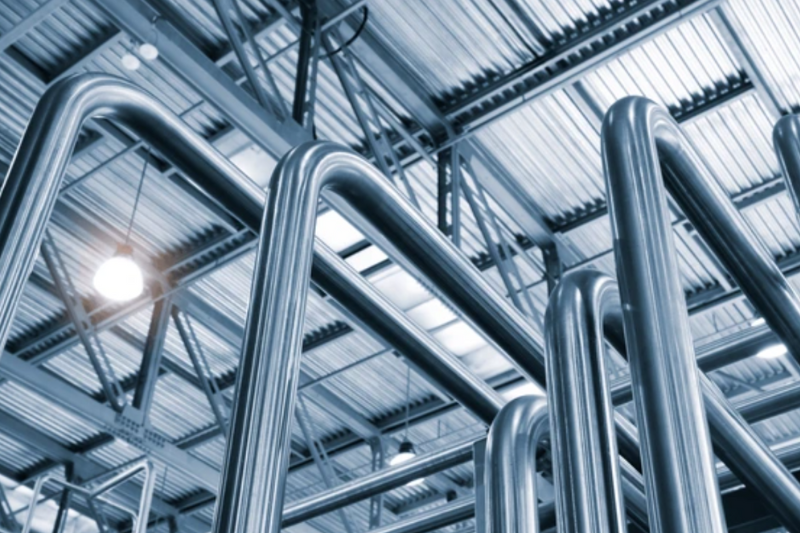What is Stainless Steel?
Stainless steel is a corrosion-resistant alloy of iron with at least 10.5% chromium, plus nickel and other elements. This composition forms a self-healing chromium oxide layer that prevents rust and staining, making stainless steel strong, hygienic, and long-lasting.
Hence, stainless steel is a preferred material in construction, manufacturing, automotive, aerospace, food processing, and marine applications.
What Makes Stainless Steel “Stainless”?
Stainless steel is “stainless” because it contains at least 10.5% chromium, which reacts with oxygen to form a thin, self-healing chromium oxide film. This invisible layer blocks moisture and air from reaching the metal beneath, preventing rust and corrosion even after scratching or wear.
Compared to traditional galvanised pipe system, stainless steel offers a self-healing chromium oxide layer that provides long-term protection without the need for zinc coatings.
Adding alloying elements such as nickel, molybdenum, titanium, and nitrogen can improve:
- Saltwater resistance (marine hardware)
- High-temperature performance (industrial furnaces)
- Strength and toughness (load-bearing structures)

How Is Stainless Steel Made?
Stainless steel is made through a carefully controlled process that combines iron, chromium, and other alloying elements, then refines and shapes them to achieve precise mechanical and corrosion-resistant properties. Understanding the process helps you choose the right grade and fabrication method for your project from CNC machining to sheet-metal fabrication or steel fabrication.
1. Raw Material Selection
Producers blend iron ore, chromium (≥10.5%), nickel, molybdenum, and other elements. The quality and ratio of these inputs determine corrosion resistance, strength, and formability. High-end grades like 316 stainless add molybdenum for marine or chemical exposure.
2. Melting in Electric Arc Furnace
The raw materials are melted at about 1,600 °C in an electric arc or induction furnace. This high-temperature stage creates a uniform molten alloy and burns off most impurities.
3. Refining and Decarburization
Processes such as Argon Oxygen Decarburization (AOD) or Vacuum Oxygen Decarburization (VOD) precisely adjust carbon and nitrogen content. This step improves corrosion resistance and mechanical properties by eliminating unwanted gases.
4. Casting into Slabs, Blooms, or Billets
The refined molten steel is cast into semi-finished forms. Continuous casting ensures consistent quality, while ingot casting is used for specialty shapes.
5. Hot Rolling and Forming
The cast blocks are heated and rolled into sheets, bars, or pipes. This process refines the grain structure and makes the metal easier to shape.
6. Heat Treatment (Annealing)
Annealing relieves internal stresses and increases ductility. The metal is heated to specific temperatures, then cooled under controlled conditions.
7. Pickling and Passivation
An acid bath removes mill scale and restores the chromium oxide film on the surface. This step is critical for stainless steel’s signature corrosion resistance.
8. Cold Working or Machining
Cold rolling, drawing, or precision CNC machining gives the final dimensions and surface finish. This stage transforms raw stock into functional parts for architecture, automotive, food equipment, or marine hardware.
9. Finishing and Quality Inspection
Surface treatments (brushing, polishing, electropolishing) and ISO-compliant inspections ensure the product meets mechanical and aesthetic requirements before shipment.
Understanding manufacturing steps ensures you specify material with the right corrosion and strength profile by reducing maintenance costs over time.

What Is Stainless Steel Used For?
Stainless steel is used in construction, transportation, food processing, medical equipment, marine hardware, and industrial machinery because it resists corrosion, is easy to clean, and maintains strength in harsh environments.
- Architecture & Construction – Cladding, handrails, elevator panels, roofing, and façades. Stainless steel channels and supports are often paired with unistrut channel system for construction projects to create corrosion-resistant frameworks and support structures.
- Automotive & Aerospace – Exhaust systems, structural brackets, fasteners, landing gear parts.
- Food Processing & Medical – Sterile kitchen equipment, surgical tools, cleanroom fittings.
- Industrial Equipment – Pumps, valves, tanks, marine hardware.
- Consumer Goods – Appliances, cutlery, watches, furniture fittings.
Need aluminium fabrication or plastic injection molding alongside stainless steel? Our integrated services cover all of these, ensuring consistent quality and single-point accountability.

Types of Stainless Steel
Stainless steel comes in several main types. Each with its own composition, structure, and performance profile. Knowing the differences helps engineers, buyers, and project managers choose the right grade for CNC machining, sheet-metal fabrication, steel fabrication, or reverse engineering services.
1. Austenitic Stainless Steel (300 Series)
- Composition: High chromium (16–26%) + nickel (6–22%), low carbon.
- Structure: Non-magnetic in annealed state.
- Key Properties: Excellent corrosion resistance, good formability, high ductility, retains strength at cryogenic temperatures.
- Common Grades: 304 (general purpose), 316 (marine/chemical).
- Typical Uses: Food processing equipment, chemical tanks, architectural panels, precision-machined parts.
2. Ferritic Stainless Steel (400 Series)
- Composition: Chromium 10.5–30%, very low nickel.
- Structure: Magnetic, body-centered cubic.
- Key Properties: Moderate corrosion resistance, good stress-corrosion cracking resistance, lower cost than austenitic.
- Common Grades: 409, 430.
- Typical Uses: Automotive exhausts, appliances, decorative trim, building interiors.
3. Martensitic Stainless Steel
- Composition: 12–18% chromium, higher carbon content.
- Structure: Magnetic, can be hardened by heat treatment.
- Key Properties: High strength and hardness, moderate corrosion resistance.
- Common Grades: 410, 420.
- Typical Uses: Cutlery, turbine blades, surgical instruments, mechanical components needing wear resistance.
4. Duplex Stainless Steel (Austenitic + Ferritic)
- Composition: About 22% chromium, 5% nickel, and added nitrogen.
- Structure: Balanced mix of austenite and ferrite phases.
- Key Properties: Twice the strength of standard austenitic, excellent stress-corrosion cracking resistance, good weldability.
- Common Grades: 2205, 2507.
- Typical Uses: Offshore oil platforms, desalination plants, chemical processing, high-load marine structures.
5. Precipitation-Hardening (PH) Stainless Steel
- Composition: Chromium + nickel + copper or aluminum.
- Structure: Hardened by aging treatments.
- Key Properties: High strength with good corrosion resistance, ideal for aerospace and precision parts.
- Common Grades: 17-4 PH.
- Typical Uses: Aerospace components, precision shafts, pump parts, and high-performance fasteners.
In flooring and structural applications, stainless steel plates can be an alternative to chequered plates and plain steel plates when enhanced corrosion resistance and hygiene are required.

Is Stainless Steel Stronger Than Steel?
Stainless steel can be as strong or stronger than regular carbon steel depending on the grade. While basic carbon steels often have higher initial yield strength, stainless steel maintains its strength longer because it resists rust, pitting, and surface degradation, and high-performance grades like 17-4 PH or duplex stainless can exceed the strength of many carbon steels.
For critical applications, consult us today to match grade and heat treatment to your load requirements.
Is Stainless Steel Homogeneous or Heterogeneous?
Stainless steel is generally homogeneous at the macroscopic level, alloying elements are distributed uniformly. However, at the microscopic level, it may contain different phases (austenite, ferrite, carbides, nitrides) depending on grade and processing. This multi-phase structure is precisely controlled to achieve desired strength, ductility, and corrosion resistance.
Can Stainless Steel Be 3D Printed?
Yes, stainless steel can be additively manufactured using metal 3D printing technologies such as Selective Laser Melting (SLM) or Direct Metal Laser Sintering (DMLS). However, SLA and FDM 3D printing (the services we provide) are primarily polymer-based. For metal parts, we typically 3D scan and reverse engineer your existing component and then CNC machine it from stainless steel billet.
Conclusion
Stainless steel is an essential material in modern manufacturing, combining durability, hygiene, and corrosion resistance. Whether you need custom stainless steel CNC machining, steel fabrication, or reverse engineering and 3D printing of stainless steel parts, The Monster Builder in Singapore delivers reliable solutions tailored to your project.



